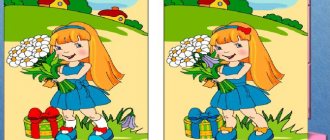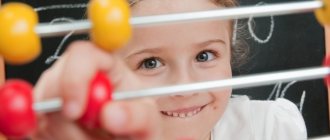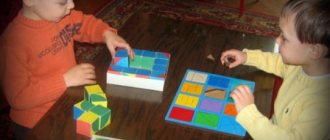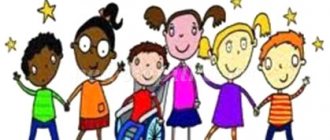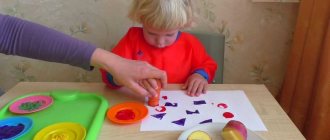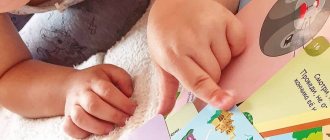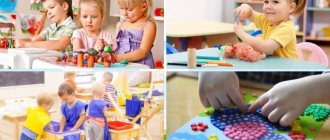Developing a child’s logical thinking is just as necessary as teaching new things, because knowledge is only tools, and logic is the ability to use them. Logic will teach you to analyze problems and situations, find and apply non-standard solutions. Such skills will be useful both in kindergarten and school, and in everyday life. There are many different exercises to develop logical thinking. But if your little one is tired of regular puzzles, offer him some fun math puzzles.
Assignments for first-graders in mathematics:
Mathematical tasks can be not only educational, but also bright and varied. These math exercises will help your children master the basic math skills needed for 1st grade. They are presented in a playful way, which promotes exciting learning for first-graders. In this non-boring form of learning, children will learn simple mathematical operations and understand that mathematics can be very interesting.
trace and color the pictures
Give your first grader a task: create a dotted line drawing and then color it. The complex also offers templates for writing out various figures.
find 2 identical pictures
The task “Find two identical pictures” is a way to develop attention and perseverance. The essence of the exercise is that among 6-8 very similar pictures, the child should identify two that are absolutely identical. It is worth explaining to the child how to perform the test: sequentially compare each picture, notice small details and identify two that are identical in all respects.
solve the examples and put the signs: >, <, =
In this section you will find a dozen useful examples with colorful illustrations and coloring pages that will help first-graders master equation solving skills.
come up with a problem statement and solve it: addition
Writing simple math problems helps first-graders develop language and abstract thinking. With the help of a teacher or parents, the child learns to identify such components of a task as the condition, the question posed, the solution and the preparation of an answer to it.
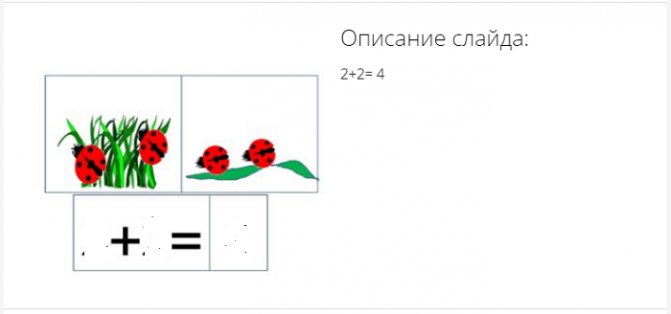
come up with a problem statement and solve it: subtraction
It is convenient to compose the skills of composing subtraction problems using ready-made cards with answers for control. It is easy for a child to understand the essence of the picture and solve the problem.
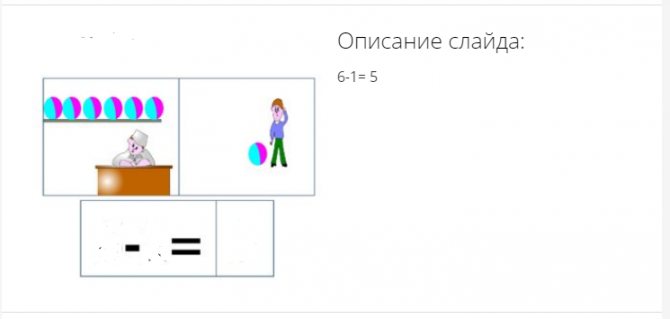
repeat the drawing dot by dot
Fine motor skills of still clumsy children's fingers need constant training. In addition, motor skills largely influence the development of the brain, especially the center responsible for speech and thinking. Suitable exercises for developing these skills are copying a drawing according to the proposed template.
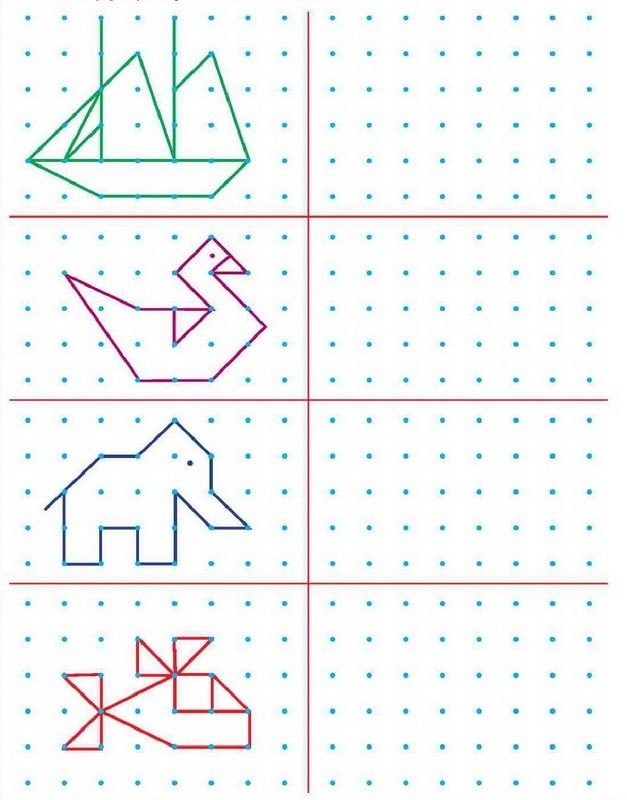
connect the figures
Tasks on creating figures according to a given algorithm are intended to develop figurative and logical thinking in a child. At first, offer the first grader simpler options, gradually complicating the task.

solve a logical thinking problem
These are simple logic problems, the solution of which involves drawing arrows. For example, using arrows you need to connect interconnected objects (an animal and its house, an example and an answer to it), restore the order of numbers, or divide objects into groups.
Draw arrows from 1 to 10.
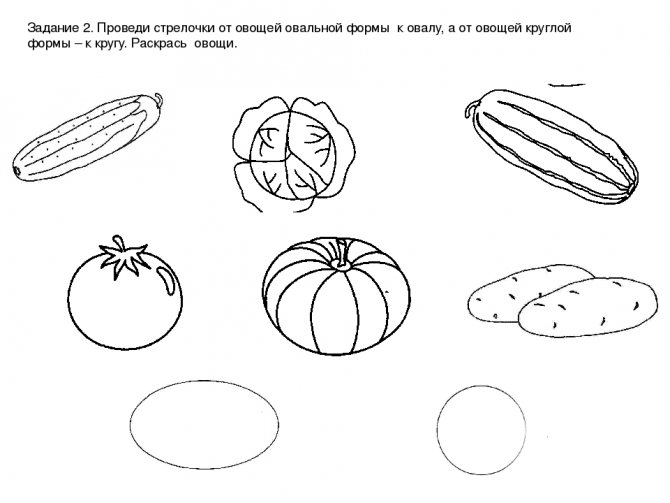
Match the example with the correct answer.
Writing assignments 1st grade:
Writing assignments are very important for elementary school students. With the help of printed simulators, students learn letters, acquire writing and literacy skills. And thanks to beautifully designed assignments, learning is fun and interesting.
tick sticks: templates for children 6 7 years old
The proposed copybooks with different sticks, hooks and other elements of letters and numbers will help first-graders acquire calligraphic writing skills, and then develop beautiful and legible handwriting. And additional coloring drawings and tracings will make this process more fun.

read divide the words into syllables
One of the basic skills of a first grader is the ability to correctly divide words into syllables. To begin, offer your child cards with the rules for dividing words into syllables, and then consolidate the acquired knowledge using a simulator with tasks.
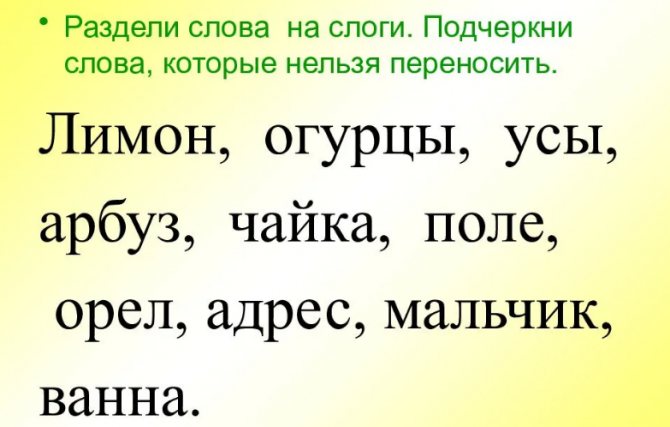
learning to hatch: templates for children 6 7 years old
To prepare your hand for writing, learn to think logically and analyze, offer your child the following patterns for shading.

Testing numeracy skills
When a child easily navigates numbers and correlates the number of objects and the corresponding number, the acquired skills can be consolidated.
Five-year-olds can be asked to find the neighbors of the numbers

For older children, you can make the game more difficult and offer number houses
Learning to write letters print:
templates for children 6 7 years old
The best way to start learning penmanship is with the help of special simulators. Using examples, the child learns to write letters, his first syllables and short words.

Developmental tasks for children “Find the differences” for a 6 year old child
Developmental tasks for children “Find the differences” for a 6-year-old child:
Developmental tasks for children “Find the differences” for a 6 year old child
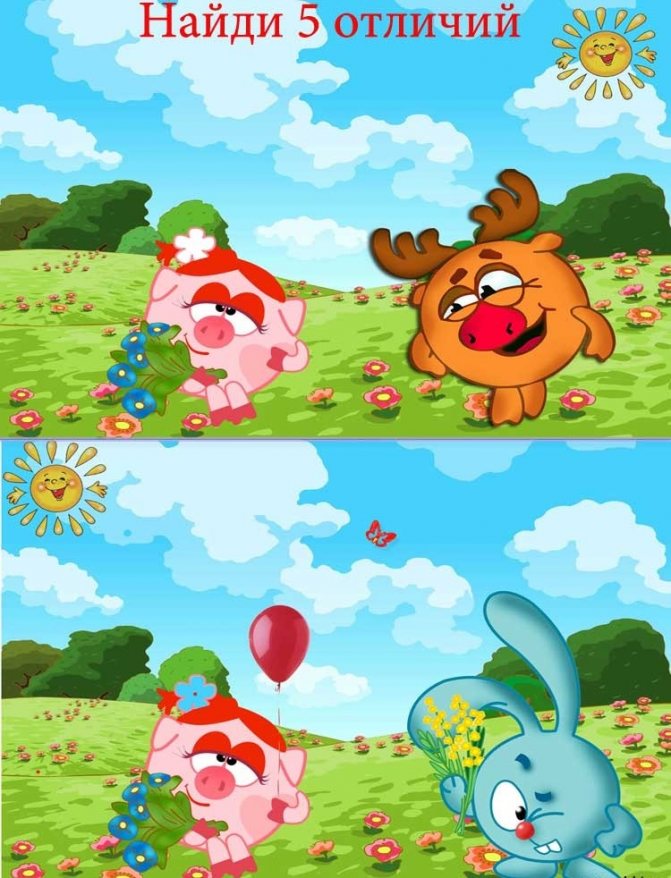
Developmental tasks for children “Find the differences” for a 6 year old child Developmental tasks for children “Find the differences” for a 6 year old child Developmental tasks for children “Find the differences” for a 6 year old child Developmental tasks for children “Find the differences” for a 6 year old child Developmental tasks for children “Find the differences” for a child 6 years old Developmental tasks for children “Find the differences” for a child 6 years old Developmental tasks for children “Find the differences” for a child 6 years old Developmental tasks for children “Find the differences” for a child 6 years old Developmental tasks for children “Find the differences” for a 6 year old child Developmental tasks for children “Find the differences” for a 6 year old child
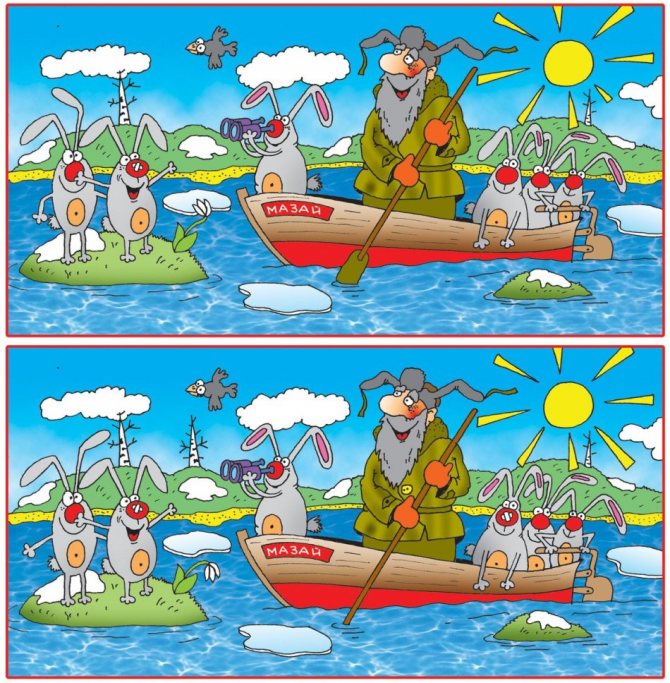
Developmental tasks for children “Find the differences” for a 6 year old child Developmental tasks for children “Find the differences” for a 6 year old child
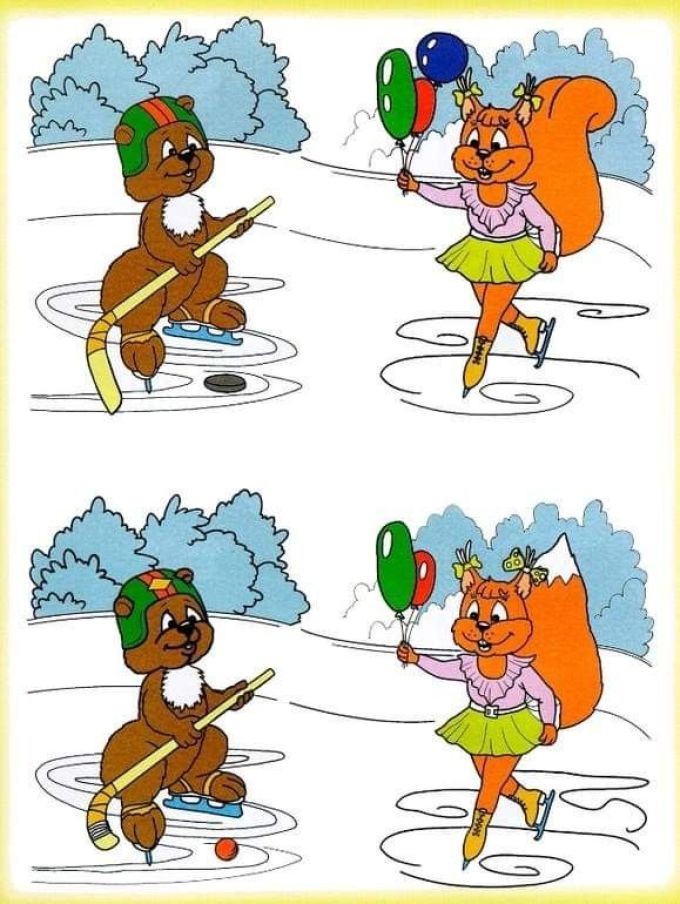
Developmental tasks for children “Find the differences” for a 6 year old child Developmental tasks for children “Find the differences” for a 6 year old child
The task is to circle the numbers:
templates for children 6 7 years old
Copybooks and coloring pages will help future schoolchildren quickly master the skills of writing numbers.
Educational tasks for children “Find the differences” for a 5 year old child
Developmental tasks for children “Find the differences” for 5 years:
Developmental tasks for children “Find the differences” for 5 years Developmental tasks for children “Find the differences” for 5 years

Developmental tasks for children “Find the differences” for 5 years Developmental tasks for children “Find the differences” for 5 years Developmental tasks for children “Find the differences” for 5 years Developmental tasks for children “Find the differences” for 5 years Developmental tasks for children “Find differences" for 5 years Developmental tasks for children "Find differences" for 5 years
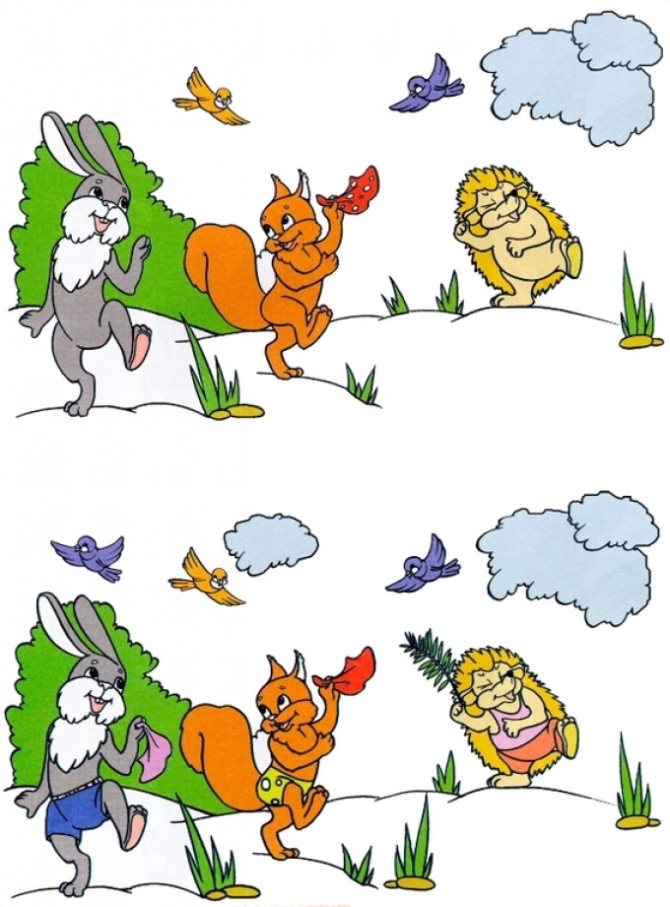
Developmental tasks for children “Find the differences” for 5 years Developmental tasks for children “Find the differences” for 5 years
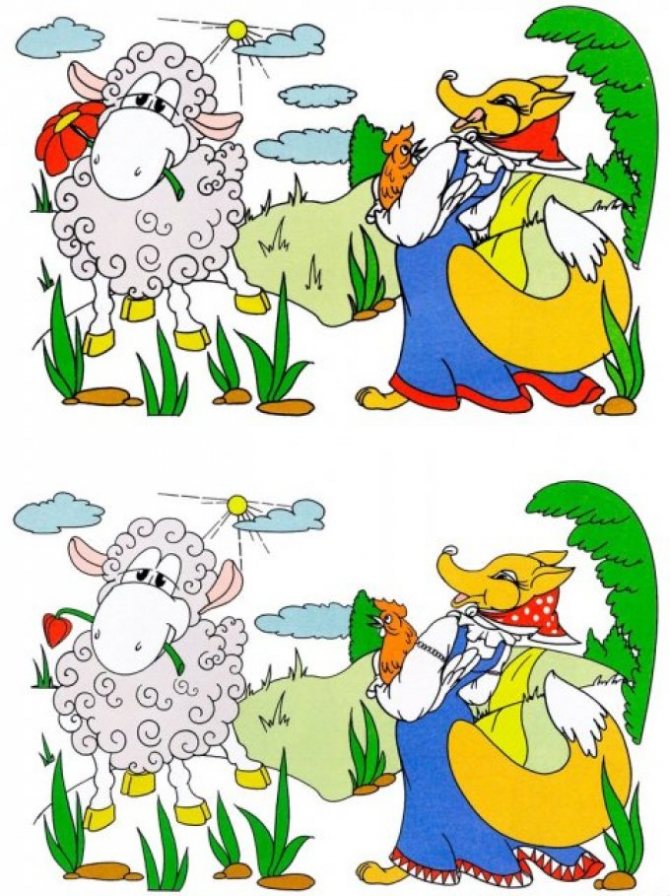
Developmental tasks for children “Find the differences” for 5 years Developmental tasks for children “Find the differences” for 5 years
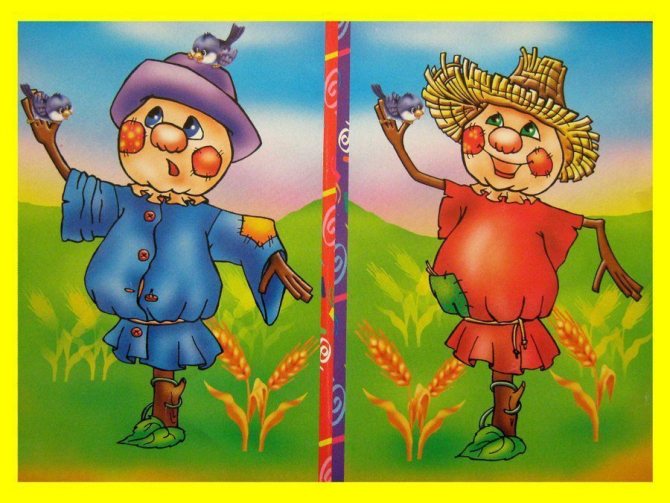
Developmental tasks for children “Find the differences” for 5 years Developmental tasks for children “Find the differences” for 5 years

Educational tasks for children “Find the differences” for 5 years
The task is to count to 10
Simple exercises will help you strengthen your ability to count up to 10.
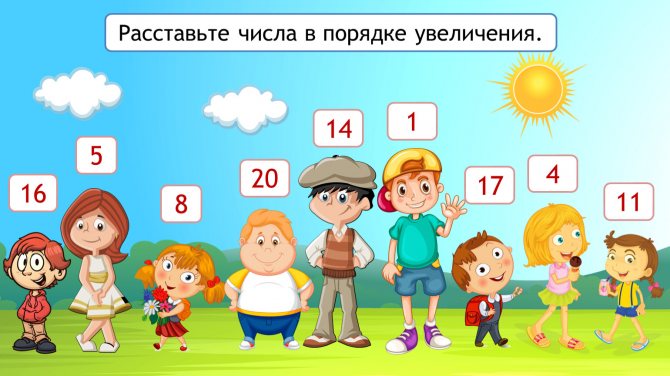
Count and write down
Once first graders have learned their numbers, it's time to begin mastering skills like addition and subtraction. Bright cards with beautiful designs are perfect for this.
Coloring pages for children with tasks
Shade each segment of the drawing in accordance with the indicated numbers, and then color it.
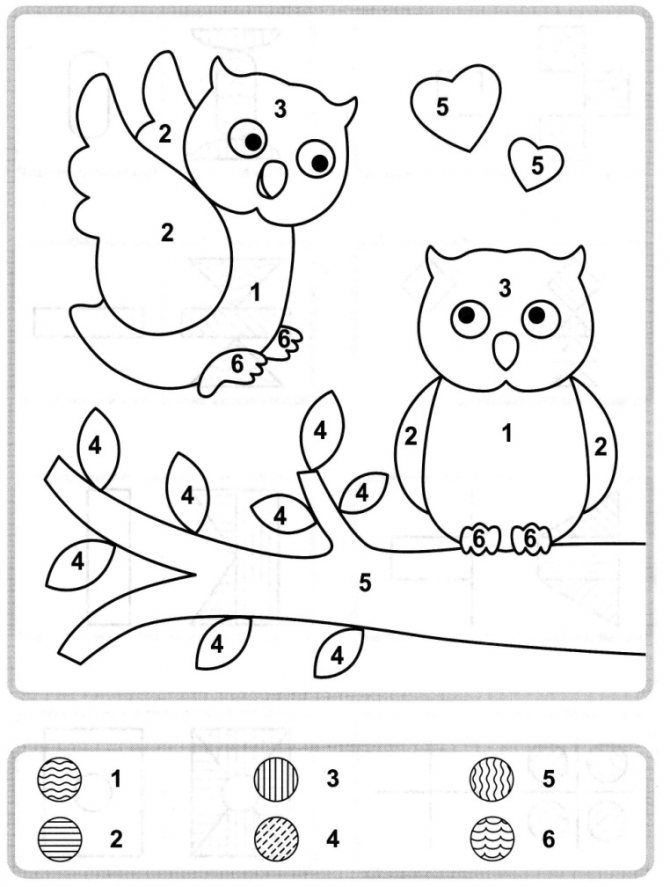
Color the picture by numbers.
Solve the examples and color the picture according to the meanings of the numbers.
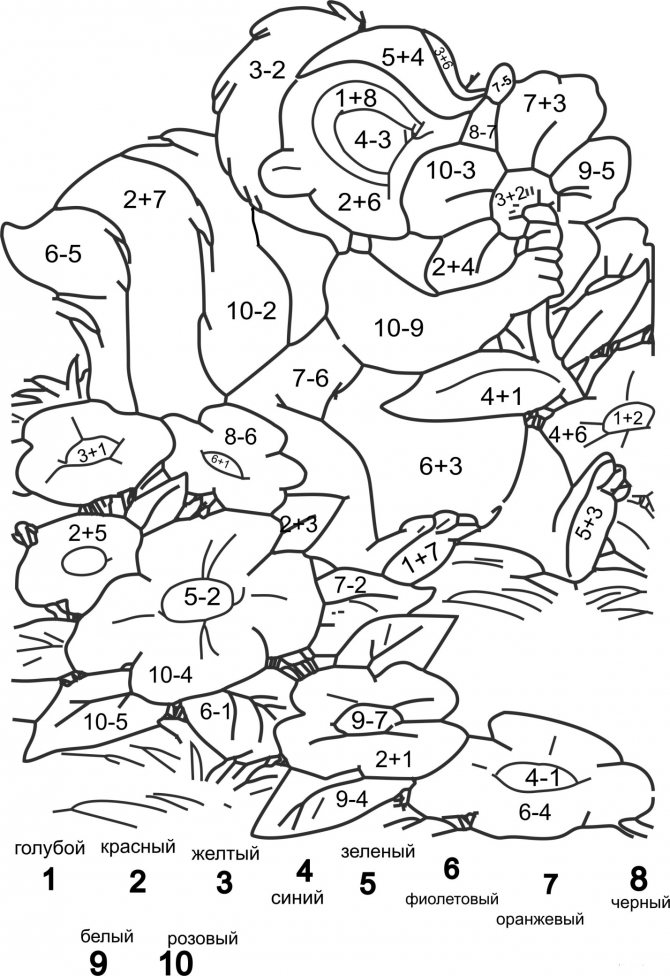
Consider what color each letter represents and color the picture. Guess which character is hidden on it.

Draw an outline and color the picture.

Educational tasks for children “Find the differences in two pictures”
Educational tasks for children “Find the differences in two pictures”:
Educational tasks for children “Find the differences in two pictures”

Developmental tasks for children “Find the differences in two pictures” Developmental tasks for children “Find the differences in two pictures”
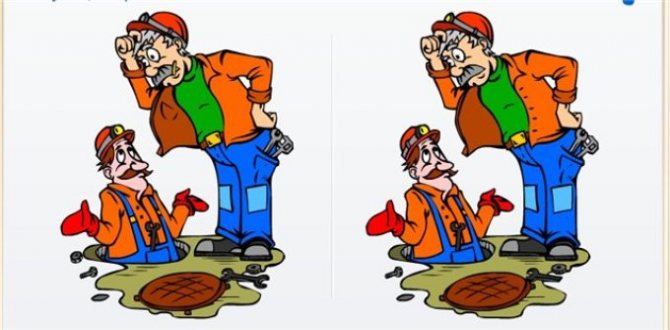
Developmental tasks for children “Find the differences in two pictures” Developmental tasks for children “Find the differences in two pictures”

Developmental tasks for children “Find the differences in two pictures” Developmental tasks for children “Find the differences in two pictures” Developmental tasks for children “Find the differences in two pictures”
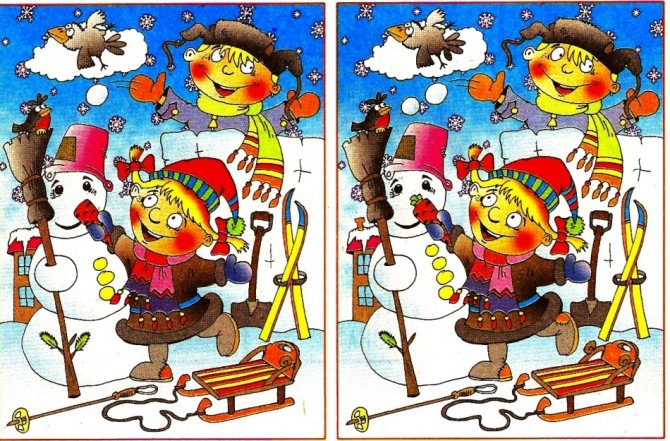
Developmental tasks for children “Find the differences in two pictures” Developmental tasks for children “Find the differences in two pictures” Developmental tasks for children “Find the differences in two pictures” Developmental tasks for children “Find the differences in two pictures”
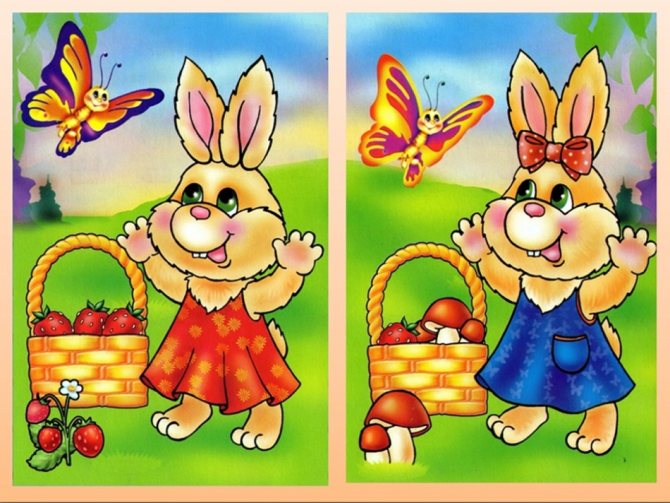
Developmental tasks for children “Find the differences in two pictures” Developmental tasks for children “Find the differences in two pictures” Developmental tasks for children “Find the differences in two pictures”
